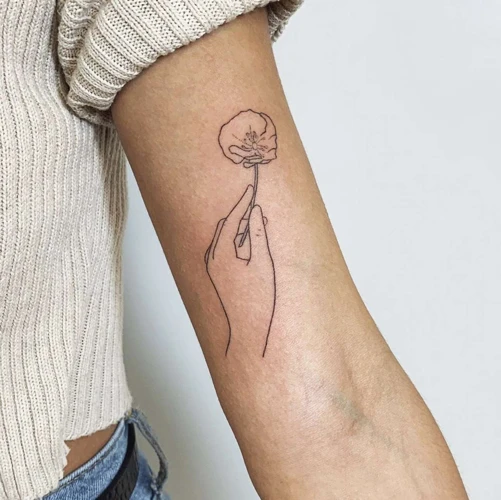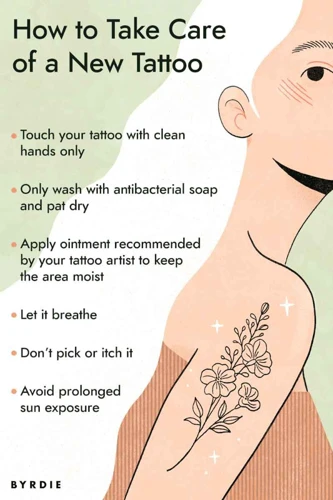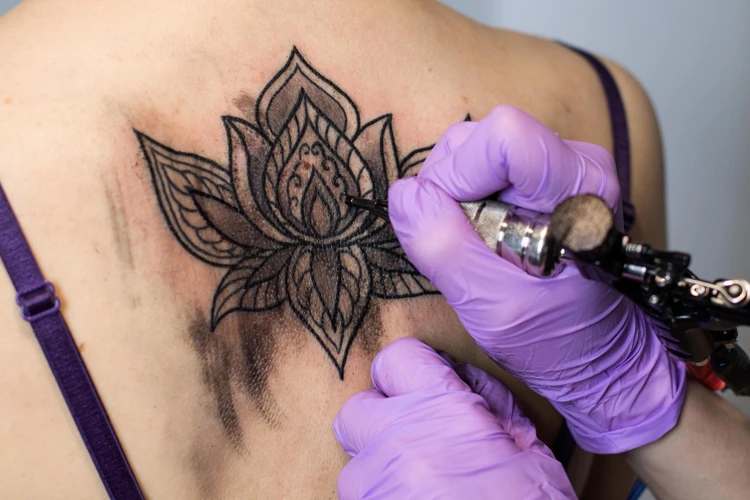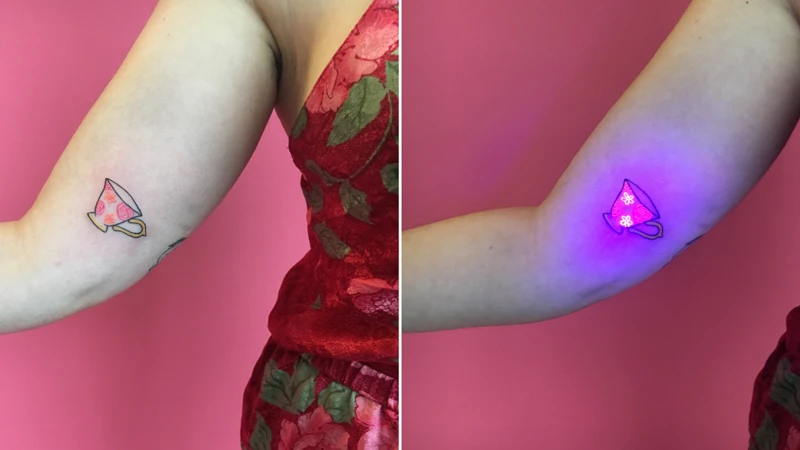Having a tattoo is a great way to express yourself and it can be a great source of pride. But tattoos don’t last forever if you don’t take care of them properly. If you want your ink to look fresh for years to come, it’s important to know how to make a tattoo last longer. In this article, we’ll go over some tips and tricks to help you keep your tattoo looking vibrant and beautiful. Read on to learn more about how to make a tattoo last longer.
Contents
Types of Tattoos

Professional Tattoos
Professional tattoos are a great way to ensure your ink will last a long time. The artist will use quality ink and tools to ensure the tattoo is properly applied and will last. Professional tattoos also require less maintenance, as the artist will be able to check the tattoo periodically, ensuring it looks its best.
DIY Tattoos
For those who choose to go the DIY route, it’s important to understand how to make tattoos last longer. The first step is to use quality ink and tools. The ink should be thick enough to prevent running and fading, and the tools should be sterile to avoid infection. It’s also important to keep the area clean and moisturized to prevent cracking and fading. Following these steps will ensure your DIY ink looks vibrant for years to come.
Tattoo Maintenance

Cleaning
The first step to maintaining your tattoo is proper cleaning. Keeping your tattoo clean will help ensure that it lasts as long as possible. Wash your tattoo with a mild soap and warm water at least twice a day. Pat dry with a clean, soft cloth. Avoid scrubbing or scratching the area as this can damage the tattoo and cause it to fade.
Moisturizing
Moisturizing is an important part of keeping your tattoo looking fresh. Apply a thin layer of moisturizer to the area twice a day. This will help keep the skin hydrated and reduce itching and flaking. Avoid lotions or ointments that contain alcohol, as this can dry out the area and cause the tattoo to fade.
Avoiding Sun Exposure
Excessive sun exposure can damage your tattoo and cause it to fade. Wear sunscreen with an SPF of 30 or higher when going outside, and cover up the tattoo when possible. Consider wearing long sleeves or a hat to cover up the area when you’re in the sun for extended periods of time.
Avoiding Sweat
Sweat can damage your tattoo, so it’s important to keep the area dry. Wear loose, breathable clothing and avoid activities that cause you to sweat excessively. If you do sweat, be sure to clean and dry the area as soon as possible.
Clothing Considerations
Certain fabrics can irritate your tattoo and cause it to fade. Avoid wearing tight clothing or fabrics that are rough or abrasive. Cotton is best, as it is soft and breathable. Change your bedding regularly to avoid any irritants that could cause damage to your tattoo.
Tattoo Touch-Ups

Touch-ups are an essential part of keeping your tattoo looking vibrant and fresh. Even if your tattoo is already a few years old, a touch-up every few years can help keep it looking as good as new. To do a touch-up, start by consulting with your tattoo artist. They can advise you on the best course of action to restore and refresh the ink.
When it comes to touch-ups, it’s important to remember that they can be more complicated than a new tattoo. If you don’t have the same artist do the touch-up, the new artist needs to be familiar with the existing work and have a good understanding of the original work.
Before a touch-up, it’s important to make sure the skin is healed. This may take up to six weeks, so it’s best to plan ahead. Once your skin is healed, it’s time to start the process. The first step is to clean the area and remove any existing scabs.
The artist will then use a needle to deposit new ink into the area, using the original lines and colors as a guide. Depending on the size and complexity of the tattoo, this process can take a few hours or a few sessions.
After the touch-up is complete, it’s important to take extra care of your skin. This includes keeping the area clean, avoiding sun exposure, and applying a good moisturizer. By following these steps, you can keep your tattoo looking fresh and vibrant for years to come.
Choosing the Right Artist

- Research: Do your research to find the right artist for you. Read reviews and look at portfolios to make sure that the artist has the style and skill set you’re looking for.
- References: Ask around for recommendations and reviews from people who have had tattoos done by the artist. It’s important to make sure that the artist you choose can deliver quality work.
- Consultation: Make sure to have a consultation with the artist before the tattoo. During the consultation, the artist should explain their process, the style they work in, and the cost of the tattoo.
- Safety: Make sure that the artist is using sterilized equipment and that they take safety precautions to prevent infection and contamination. Ask about the type of ink they use and the aftercare instructions they provide.
- Experience: Choose an experienced artist who has been tattooing for a number of years and has a portfolio of tattoos that you like. An experienced artist will be able to provide high quality work and help ensure that your tattoo will last a long time.
Choosing Quality Inks

- Choose Professional Tattoo Inks – Professional tattoo inks are made specifically for tattoos, and are of a much higher quality than inks used in other forms of body art. Professional inks are also easier to work with and provide a more consistent color.
- Opt for Organic Tattoo Inks – Organic tattoo inks are made from natural ingredients and are more likely to last longer than other inks. They are also non-toxic and hypoallergenic, making them safer for your skin.
- Pick the Right Color – Darker colors tend to last longer than lighter colors, as they are less prone to fading. Black and blue inks are usually the most long-lasting and popular.
- Check the Ingredients – Before purchasing a tattoo ink, make sure to read the ingredients list to make sure the ink is safe and compatible with your skin.
Choosing Quality Needles

A tattoo needle should be of the highest quality available. It should be made of medical-grade stainless steel and should be designed for single-use and then discarded. Quality needles are sharp and precise and create the most accurate line work in your tattoo.
Needle configuration is also important. The needle configuration is the shape and number of needles arranged on the needle bar. A liner needle is comprised of a single row of needles and is typically used for outlining. A shader needle is a cluster of needles and is used to shade and fill in the tattoo.
Needle size is also important. The needle size determines the width of the line in the tattoo. Needles sizes are measured by the number of needles on the bar and the width of the needles.
Needle gauge is measured in the size of the needle’s diameter. The higher the gauge number, the thinner the needle.
| Needle Type | Configuration | Size | Gauge |
|---|---|---|---|
| Liner | 1 row | n/a | #10 – #12 |
| Shader | Cluster | 3-9 needles | #8 – #14 |
Using the wrong needle size or configuration can cause a tattoo to heal poorly, fade faster or become distorted. Quality needles are essential for a good tattoo that will last.
Choosing the Right Design
Choosing a design that is meaningful to you and one that will stand the test of time is paramount to the longevity of your tattoo. Consider the size and shape of the design, taking into account the area of skin being inked. A larger design may require more frequent touch-ups, while a smaller one may hold up better over time. Look for designs that are not overly intricate or delicate, as these can fade more quickly. Finally, be sure to research the artist you choose to ensure they are experienced and have a good track record of producing quality tattoos.
Frequently Asked Questions
What Types of Tattoos Should I Avoid if I Want My Tattoo to Last Longer?
Avoid tattoos that have multiple colors, fine lines, intricate designs and delicate details as they are more prone to fading and blurring over time. Also, avoid tattoos that are exposed to direct sunlight, as UV rays can cause the ink to fade or blur. Tattoos that are placed on thin skin areas such as the wrist, ankle, and neck are more prone to fading and distorting, so it’s best to avoid them.
What are some tips to Help My Tattoo Heal Quickly?
- Clean Daily: Clean the tattooed area with lukewarm water and a mild soap, several times a day.
- Moisturize: Apply a thin layer of moisturizer to the tattooed area several times a day.
- Protect: Wear clean clothing and keep the tattooed area out of direct sunlight.
- Avoid Irritants: Avoid swimming, soaking in a hot tub, and applying makeup and lotions to the area.
- Consult a Professional: Follow the instructions provided by your tattoo artist.
What Aftercare Products Should I Use to Help Keep My Tattoo Looking Fresh?
- Tattoo ointment: A specialized ointment designed to deeply moisturize and protect the skin. It can also help prevent infection and speed up healing.
- Non-scented moisturizer: A fragrance-free moisturizer that won’t irritate the skin or cause any further damage to the tattoo.
- Mild cleanser: A gentle soap or cleanser that won’t strip the skin of its natural oils.
- Sunscreen: A broad-spectrum sunscreen with SPF 30 or higher that is specifically designed for tattoos. It will help protect the tattoo from fading and discoloration.
- Vaseline: A petroleum jelly that can help protect the tattoo from bacteria and keep the tattooed area moist and supple.
What Type of Sunscreen Should I Use to Protect My Tattoo?
Choose a broad spectrum, water-resistant sunscreen:
- Choose a sunscreen with an SPF of 30 or higher.
- Look for a water-resistant label, so you don’t have to reapply it as often.
- Choose a broad-spectrum sunscreen, to protect your tattoo from UVA and UVB rays.
- Choose a sunscreen that’s specifically formulated for tattoos, if possible.
Apply the sunscreen whenever you’re going to be in the sun:
- Apply sunscreen to your tattoo about 15 minutes before going outside.
- Reapply sunscreen every two hours, or more often if you’re swimming or sweating.
- Don’t forget to apply sunscreen to any other areas of exposed skin.
How Often Should I Moisturize My Tattoo?
It is essential to keep your tattoo well-moisturized to ensure it retains its vibrancy and clarity for years to come. For best results, you should moisturize your tattoo at least twice daily using a highly-moisturizing product such as an unscented lotion or a specially-formulated tattoo aftercare balm. Ensure you use a very thin layer of product and massage it into the skin until it is fully absorbed.
Conclusion
Taking proper care of your tattoo is essential to making sure it lasts longer. Keep it out of the sun, moisturize it regularly, and avoid products that can irritate it. Additionally, it’s important to find a reputable tattoo artist and use quality ink and supplies to ensure a well-done tattoo that lasts.